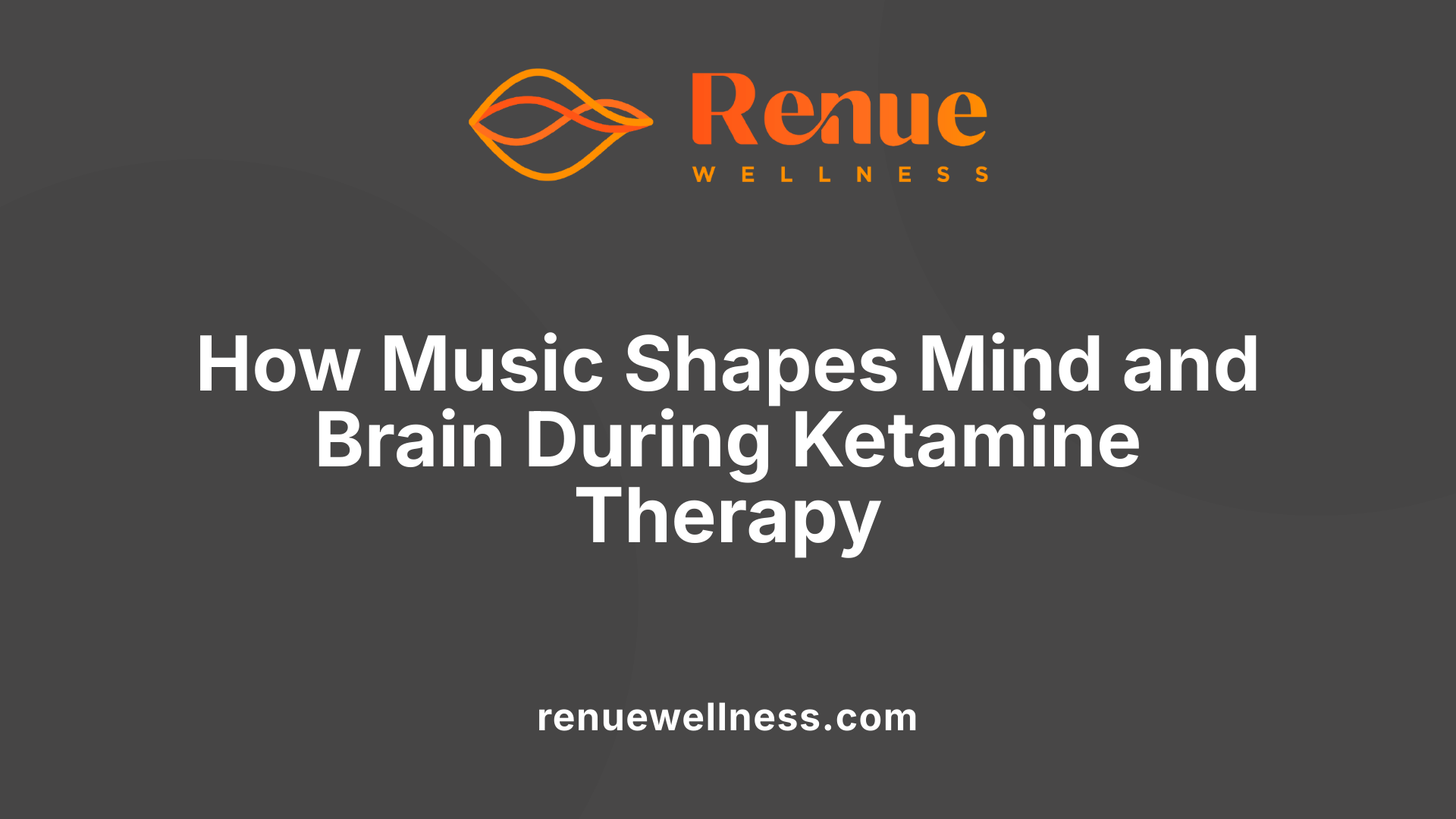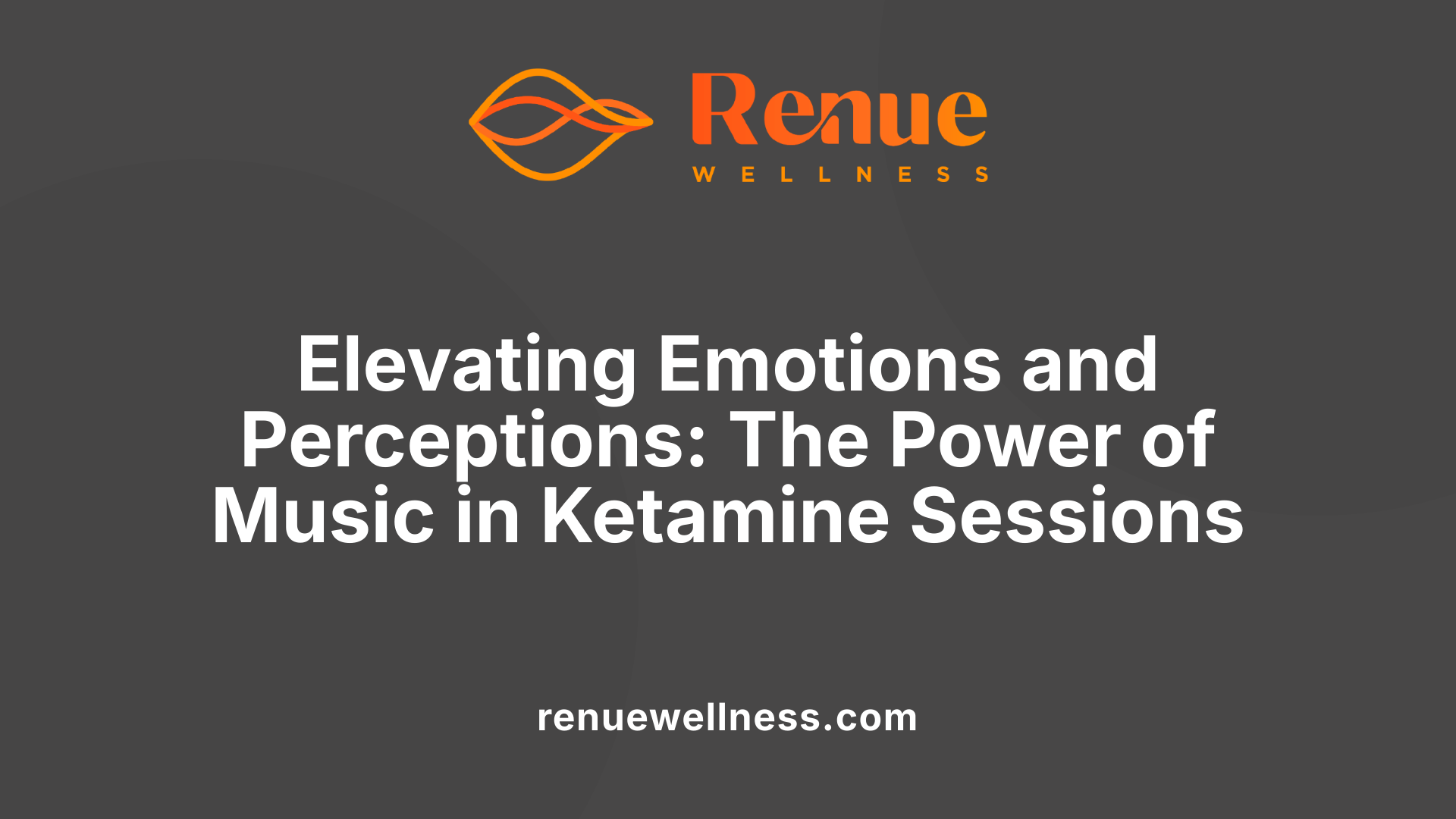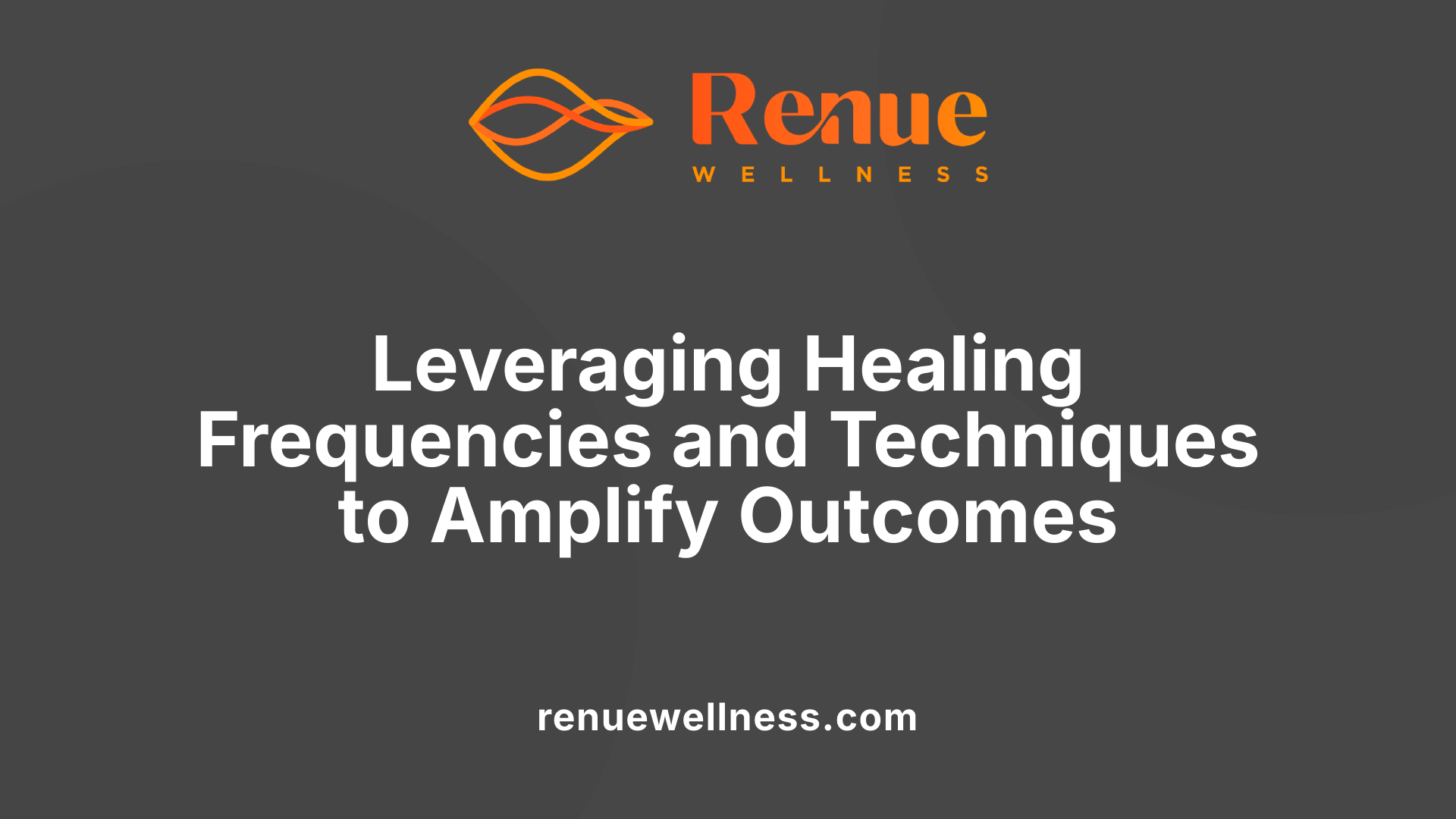How Music Selection Impacts the Ketamine Experience


August 13, 2025
Understanding the Integral Role of Music in Modern Mental Health Treatment
Music has long been recognized as a universal healing modality across cultures and history. In the context of ketamine-assisted therapy, music emerges as a vital tool that can reshape the therapeutic landscape. This article explores how the strategic selection of music influences psychological, physiological, and emotional experiences during ketamine sessions, based on scientific research and clinical practices.
The Historical and Cultural Significance of Music as a Healing Tool
 Throughout history, music has played a vital role in healing practices across various civilizations. In ancient Greece and Egypt, music was intertwined with spiritual and physical well-being, regarded as a divine gift capable of restoring health and harmony. The Greeks particularly associated music with Apollo, the god of healing, and believed that melodic sounds could align the body's humors and purify the mind.
Throughout history, music has played a vital role in healing practices across various civilizations. In ancient Greece and Egypt, music was intertwined with spiritual and physical well-being, regarded as a divine gift capable of restoring health and harmony. The Greeks particularly associated music with Apollo, the god of healing, and believed that melodic sounds could align the body's humors and purify the mind.
Indigenous cultures, such as Native American tribes, have long used rhythmic drumming and singing in rituals aimed at healing emotional wounds and connecting with spiritual realms. These traditions view music as a powerful medium for emotional catharsis, trauma processing, and communal bonding.
In religious ceremonies worldwide, music has facilitated transcendence and spiritual awakening. From Gregorian chants in Christianity to Sufi whirling rituals with spiritual songs, music helps create sacred space for healing and spiritual connection.
In modern times, the emotional and therapeutic effects of music have been harnessed in clinical settings. Music therapy has become an established practice to alleviate mental health conditions like depression, anxiety, and trauma. Historically, these applications draw from the idea that music can influence brain states, evoke memories, and foster emotional expression.
In the context of ketamine-assisted therapy, music's historical significance as a facilitator of emotional release and altered consciousness informs contemporary practices. Clinicians incorporate curated playlists and soundscapes to invoke a sense of safety, relaxation, and insight—building on the longstanding belief that music can heal and transform.
Overall, the cultural and historical legacy of music as a healing tool underscores its enduring importance. Its integration into modern psychotherapy, especially in psychedelic and ketamine therapies, is a continuation of a tradition that values music as a universal language for health and transcendence.
The Neuropsychological Impact of Music During Ketamine Sessions

How does music influence the psychological and physiological effects during ketamine therapy?
Music plays a crucial role in shaping the experience during ketamine therapy. Psychologically, it fosters a calming environment, reduces anxiety, and enhances emotional engagement, helping patients feel supported throughout the session. Physiologically, music can stabilize vital signs; for example, studies like the MUSIK trial show that music may lower systolic blood pressure spikes commonly seen during infusions. Patients often report that music allows them to relax more deeply and access emotional states, thereby potentially improving treatment outcomes.
The choice of genre matters, with relaxing electronic, ambient, or classical music being preferred to prevent distraction or emotional distress. Patient-specific factors like musical preferences and cultural background also influence the therapeutic benefits of music. Overall, integrating music into ketamine sessions creates a more tolerable and emotionally supportive environment, which can lead to enhanced effectiveness of the treatment.
What mechanisms underlie music's effect on altered states of consciousness during ketamine treatments?
Music influences altered states primarily through its ability to modulate brain networks involved in emotion, perception, and reward. Rhythmic elements foster neural entrainment, synchronizing brain oscillations at specific frequencies that encourage states of flow, absorption, and trance. This rhythmic synchronization can deepen the immersive experience during ketamine sessions.
Moreover, music activates various regions such as the limbic system, hippocampus, and prefrontal cortex, which are involved in emotion and memory. It triggers neurochemical responses, notably the release of dopamine, which reinforces reward pathways and positive mood states. This neurochemical activity, combined with plasticity-promoting effects such as enhanced cortical connectivity, supports an expanded, altered state of consciousness.
Additionally, the dynamic and improvisational qualities of music can help create a narrative or structure within the psychedelic experience, guiding patients through emotional and cognitive landscapes. Entrainment and sensory-motor synchronization foster a sense of connection and flow, making it easier for patients to explore subconscious material safely.
Activation of brain regions involved in emotion, memory, and reward
Music impacts almost every part of the brain, especially areas linked to emotion, memory, and reward. During ketamine sessions, emotional centers like the limbic system become highly active, allowing patients to access and process feelings more freely. Memory-related regions such as the hippocampus are engaged, which supports emotional recall and integration.
Reward pathways, involving structures like the nucleus accumbens and ventral tegmental area, are stimulated through dopamine release. This effect not only enhances pleasure but also counteracts ketamine’s dissociative effects, making the experience more tolerable. The frontal cortex, involved in decision-making and emotional regulation, also shows increased activity, helping patients make sense of their experiences.
Influence on neural plasticity and neurochemical responses
One of ketamine's therapeutic mechanisms is its capacity to enhance neuroplasticity. When paired with music—especially emotionally resonant or calming tunes—this plasticity can be further amplified. Music triggers neurochemical responses, including the release of serotonin and dopamine, which promote mood stabilization and positive emotional states.
Research indicates that music can increase cortical plasticity, facilitating the formation of new neural connections. During therapy, this process makes it easier for patients to rewire maladaptive patterns associated with depression, anxiety, or trauma. The combined stimulation of neuroplasticity and neurochemical modulation fosters a profound psychological shift, supporting healing and resilience.
Neural entrainment and synchronization
Entrainment refers to the synchronization of brainwaves and physiological rhythms (such as heart rate and breathing) with external rhythmic stimuli like music. In ketamine therapy, musical rhythms at specific frequencies (e.g., delta, theta, or alpha waves) promote neural entrainment, leading to states of deep relaxation or subconscious processing.
This synchronization helps regulate the nervous system, reducing stress responses and enhancing feelings of safety. It also promotes coherence between different brain regions, facilitating integration of emotional and cognitive insights. Binaural beats and harmonic soundscapes are often used to induce these entrainment effects, supporting the therapy’s goal of fostering neuroplasticity and emotional release.
Music's role in inducing altered states of consciousness
Music acts as a catalyst for altered states by engaging the brain’s sensory, emotional, and cognitive systems. Its rhythmic and melodic components can lead to trance-like conditions, heightened introspection, and creative cognition. During ketamine sessions, music provides structure, guiding the emotional flow and helping patients access subconscious material.
In cultural and historical contexts, music has been integral to spiritual and healing ceremonies, emphasizing its power to induce transcendental states. Modern research confirms that music influences neurotransmitter levels, neural cohesion, and brain wave activity, collectively supporting the deep, often transformative states accessed during psychedelic-assisted therapies.
Integrating thoughtfully curated music into ketamine treatment leverages these neuropsychological mechanisms, enhancing both the depth and safety of the therapeutic journey while fostering emotional release and personal insight.
How Music Enhances Emotional and Perceptual Experiences During Ketamine Therapy

How does music during ketamine therapy affect mood, emotions, and perceptions?
Music in ketamine therapy plays a vital role in shaping the patient's emotional and perceptual journey. It can significantly boost relaxation and reduce anxiety, making the experience more tolerable and emotionally open. Studies reveal that a majority of patients believe music enhances their treatment outcomes and aids in relaxation during sessions.
By influencing brain regions involved in emotion and perception—such as the limbic system, hippocampus, and frontal cortex—music helps modulate mood and promotes emotional expression. It stimulates dopamine release, which fosters positive feelings, and can reduce stress hormones like cortisol, supporting a sense of calm.
The therapeutic effect is partly due to music's ability to evoke personal memories, imagery, and emotional narratives. Patients often report that music allows deeper access to their inner worlds, facilitating emotional release and insight.
Furthermore, carefully selected music—like ambient, classical, or binaural beat tracks—provides a structured, narrative journey. This guides patients through different emotional states, helping them process complex feelings and experiences.
Overall, music during ketamine therapy enhances emotional regulation and perceptual openness, deepening the healing process. While research is ongoing, the integrative use of music and ketamine holds promise for enriching mental health treatments.
How Music Influences Brain Networks and Pathways
Music impacts most parts of the brain, including the limbic system (emotional regulation), hippocampus (memory), and the prefrontal cortex (decision-making and mood). It activates neural pathways related to sensation, emotion, and cognition, fostering neural plasticity.
During ketamine sessions, the Default Mode Network (DMN)—a brain network involved in self-referential thought—is temporarily quieted. Music complements this by providing an external structure that anchors emotional and perceptual processes.
The entrainment of neural oscillations by rhythmic music can promote neuroplasticity, enabling the brain to reorganize neural circuits. This process supports emotional healing and behavior change.
In addition, music triggers neuronal pathways linked to reward and motivation, helping patients reconnect with positive emotions. These effects contribute not only to immediate comfort but also to long-term mental health improvements.
Structuring the Therapeutic Journey with Music
In ketamine therapy, different stages—initial induction, peak experience, and post-therapy integration—are often supported by tailored musical selections.
For induction, calming ambient sounds or instrumental music reduce anxiety. During the peak, emotionally resonant or binaural beats deepen the inward focus. Post-session, familiar playlists reinforce insights and emotional processing.
Creating a playlist that considers tempo, emotional tone, and cultural relevance maximizes the therapeutic effects. Personalized soundscapes and frequencies (like Solfeggio or Schumann resonance) can foster relaxation and cellular healing.
By carefully structuring music's role, clinicians can guide patients through their psychological journey, facilitating emotional release, insight, and integration.
| Aspect | Example Music Types | Purpose | Additional Notes |
|---|---|---|---|
| Relaxation | Ambient, classical | Reduce anxiety | Use slow tempo, instrumental |
| Emotional depth | Binaural beats, harmonic tones | Deepen emotional states | Support neural entrainment |
| Integration | Familiar, personalized playlists | Reinforce insights | Use post-session for reflection |
This thoughtful integration can transform ketamine therapy into a profound, healing experience that leverages the power of music to foster emotional and perceptual change.
Optimal Music Selection and Personalization for Ketamine Therapy

What is the optimal type of music to use during ketamine therapy?
The best music for ketamine therapy is calming, instrumental genres that help patients relax and focus inward. Ambient sounds, classical music, natural sounds, and new age compositions are often recommended because they promote tranquility without distracting lyrics or complex rhythms.
Curated playlists frequently include healing frequencies such as Solfeggio tones (396 Hz, 528 Hz, 963 Hz), binaural beats, and the Schumann Resonance (7.83 Hz). These sounds are believed to support emotional healing, reduce anxiety, and enhance neuroplasticity during sessions.
Avoiding music with lyrics is generally advised to prevent emotional triggers or distraction, which could interfere with the therapeutic process. Instead, slow-tempo, harmonic soundscapes are favored for their calming effects and ability to create a safe environment.
Personalization plays a crucial role. Patients are encouraged to select music that resonates with their emotional state and preferences. Clinicians often guide this process by providing preselected playlists or recommending tracks that facilitate comfort and safety.
Overall, thoughtfully chosen instrumental and frequency-based music enhances the therapeutic atmosphere, helping to deepen emotional exploration, reduce stress, and improve overall outcomes in ketamine-assisted therapy.
Specialized Audio Techniques and Therapeutic Frequencies in Ketamine Sessions

Does the type of music, such as healing frequencies or specific playlists, impact therapy outcomes?
The selection of specific music types, including healing frequencies like Schumann resonance (7.83 Hz), Solfeggio frequencies (such as 396 Hz, 528 Hz, and 963 Hz), and binaural beats, plays a significant role in enhancing therapy sessions. Recent studies and clinical experiences highlight that these carefully curated soundscapes can elevate the therapeutic environment. For instance, music containing healing frequencies may promote relaxation, reduce physiological stress markers like blood pressure and cortisol, and support deeper emotional processing.
Evidence from trials such as the MUSIK study shows that when patients listen to music with therapeutic frequencies, they tend to exhibit improved tolerability and decreased anxiety. These frequencies can also synchronize brain activity, supporting neuroplasticity and cellular healing processes. For example, binaural beats can induce theta brainwaves associated with profound relaxation and subconscious work.
Furthermore, the impact of music is not limited to frequencies alone. The use of ambient, instrumental, or natural sounds minimizes distraction and enhances inward focus, fostering a safe and supportive space. Patient feedback has shown that such music can significantly deepen emotional insights and help in trauma processing.
Personalized playlists that incorporate these healing frequencies, combined with patient preferences, can further optimize outcomes. When integrated into treatment protocols, these specialized audio techniques help create a powerful, multisensory experience that facilitates mental and physical healing.
In summary, tailored sound frequencies and curated playlists hold substantial promise in neuroplasticity and cellular recovery, potentially amplifying the benefits of ketamine-assisted therapy through precise auditory stimulation.
Post-Session Reflection, Integration, and Continued Use of Music
Revisiting playlists for emotional processing
After ketamine sessions, many patients benefit from returning to their personalized music playlists. Listening again to these carefully curated soundscapes can help reinforce emotional insights uncovered during therapy. Music acts as a bridge, allowing patients to process feelings at their own pace, deepening their understanding of inner experiences.
Supporting post-session integration
Post-therapy, music can serve as a vital tool for integration. It helps anchor positive changes and supports ongoing emotional healing. By embedding music into daily routines, patients create a continuous connection to their therapeutic journey, making it easier to sustain progress and manage residual anxiety or emotional upheaval.
Music as a tool for ongoing healing outside therapy sessions
Many individuals incorporate music into their everyday lives for ongoing mental health maintenance. This can include mindful listening during meditation, relaxation exercises, or simply unwinding at home. Specific playlist choices—such as ambient, classical, or binaural beats—are selected based on their calming properties and how they support emotional balance.
Using music in meditation, relaxation, and sleep
Music is particularly effective when used as part of relaxation routines. It can help quiet the mind, promote restful sleep, and deepen meditative states. By pairing calming sounds, patients can extend the benefits of ketamine therapy beyond the clinical environment. Continuous use fosters resilience, emotional stability, and a sense of safety, crucial factors for long-term recovery.
Harnessing the Therapeutic Power of Music for Lasting Impact
The strategic selection and personalized integration of music during ketamine therapy play a significant role in shaping therapeutic outcomes. From historical roots as a healing modality to cutting-edge neuroscience, the influence of music spans emotional, physiological, and perceptual domains. Clinicians and patients alike benefit from understanding the importance of calming, personalized soundscapes and healing frequencies that support relaxation, emotional release, and neuroplasticity. As research continues to evolve, the deliberate use of music can optimize ketamine-assisted treatments, fostering deep, transformative healing that extends beyond individual sessions into long-term well-being.
References
- Exploring the impact of music on response to ketamine/esketamine
- How Music Enhances Ketamine Therapy: A Guide for Patients
- The Science of Music, Entrainment, and Ketamine Treatments
- The Role of Music in Ketamine and Psychedelic-Assisted Therapy
- Ketamine and Music Therapy: Enhancing the Therapeutic Experience
- The Ultimate Guide to Creating the Best Ketamine Therapy Music ...
- The Transformative Power of Music in Your Ketamine Journey
- How Music Shapes the Ketamine Assisted Therapy Journey
- Listening to music during intranasal (es)ketamine therapy in patients ...
- Selecting the Ideal Soundscapes for Ketamine Therapy
Recent Posts
Conditions Treated
AnxietyDepressionOCDPTSDPostpartum DepressionPain ManagementSubstance AbuseSuicidal IdeationOur Location


